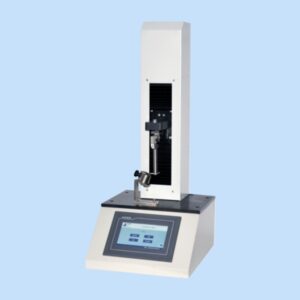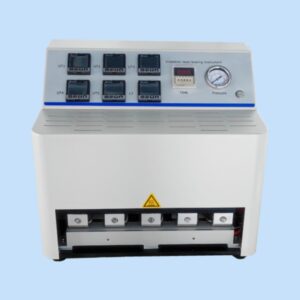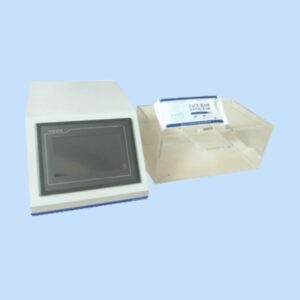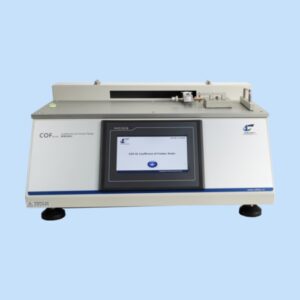NPT-01 Needle Penetrability Tester
- Standard: ISO 8871-5, USP 381
- Manufacturer: Cell Instruments
- Applications: Packaging materials, medical device materials, pharmaceutical testing, adhesives, textiles, paper and cardboard containers, and more.
- Customization: Available for special testing requirements and automation transformations
In the pharmaceutical and medical device industries, ensuring the safety and efficacy of drug delivery systems is paramount. One critical aspect of this is the needle penetrability test, which analyzes the force required for an injection needle to penetrate the stopper of a vial. This test is essential for maintaining the integrity and reliability of pharmaceutical packaging, ensuring that patients receive their medications safely and effectively.
I. Introduction to Needle Penetrability Tester
1. Needle Penetrability Testing Importance
Needle penetrability testing is vital for assessing the performance of vial stoppers used in pharmaceutical packaging. It ensures that the needle can penetrate the stopper without excessive force, preventing damage to the needle or contamination of the medication. This test is crucial for maintaining the quality and safety of injectable drugs.
2. Main Parameters
| Test Range | 0~200N (Or as required) |
| Stroke | 200mm (without clamp) |
| Speed | 1~500mm/min(or as required) |
| Displacement Accuracy | 0.01mm |
| Accuracy | 0.5% F.S. |
| Output | Screen, Microprinter, RS232(optional) |
| Power | 110~ 220V 50/60Hz |
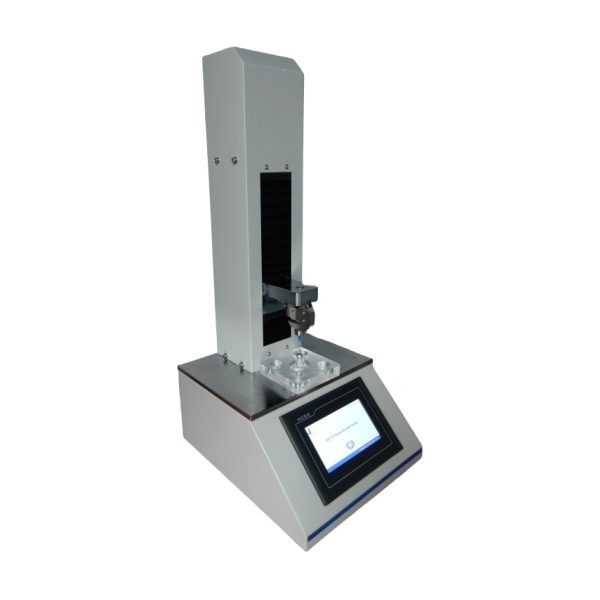
II. Technical Features
1. PLC Control Unit and User-Friendly HMI Touch Screen
The needle penetrability tester is equipped with a PLC control unit and a 7-inch HMI touch screen, providing an intuitive interface for operators. This setup allows for easy configuration and monitoring of tests, enhancing user experience and efficiency.
2. Precision Ball Screw and Stepper Motor
A precision ball screw and stepper motor ensure accurate and consistent tests. This combination provides precise control over the needle’s movement, resulting in reliable and repeatable results.
3. Variable Test Speed Capability
The tester offers variable test speed capability, allowing for flexible testing to accommodate different materials and requirements. This feature ensures that the tester can adapt to various testing conditions and standards.
4. Multiple Sample Jigs and Needle Types
To accommodate a range of testing scenarios, the tester offers multiple sample jigs and needle types. This versatility ensures that the tester can handle different vial and stopper sizes and materials.
5. Safety Features
The needle penetrability tester includes safety features such as position restrictors and overload protections. These features ensure the safety of the operator and the equipment, preventing damage and ensuring reliable operation.
6. Automatic Returning Function
An automatic returning function saves operation time by returning the needle to its starting position after each test. This feature enhances the efficiency of the testing process, allowing for quicker turnaround times.
7. Embedded Dot Matrix Type Microprinter
For long-term data keeping, the tester is equipped with an embedded dot matrix type microprinter. This printer allows for the immediate printing of test results, facilitating record-keeping and analysis.
III. Test Methods
1. Procedure
Performing a needle penetrability test involves several steps:
- Preparation of Samples: Vials and stoppers are prepared and cleaned to ensure they are free from contaminants.
- Calibration and Setup: The tester is calibrated, and the appropriate settings are configured based on the type of stopper and needle being tested.
- Execution of the Test: The needle is inserted into the stopper, and the force required for penetration is measured and recorded.
- Data Recording: The results are documented, and the data is analyzed to determine the quality and performance of the stopper.
2. Data Analysis
The analysis involves interpreting the force of penetration and assessing the integrity of the stopper. Common data output formats include graphs and charts that display the penetration force over time, providing a clear visual representation of the test results.
IV. Standards Compliance
1. ISO 8871-5
ISO 8871-5 specifies the requirements for elastomeric parts used in pharmaceutical packaging, including vial stoppers. This standard outlines the tests needed to ensure the materials’ quality and performance, with needle penetrability being a crucial aspect. Compliance with ISO 8871-5 ensures that the stoppers meet international quality and safety standards.
2. USP 381
USP 381 provides guidelines for elastomeric closures used in injectable drug containers. It includes specific sections addressing needle penetrability, ensuring that the closures do not compromise the sterility or integrity of the medication.
V. Applications
1. Pharmaceutical Industry
In the pharmaceutical industry, needle penetrability testing ensures the safety and efficacy of drug delivery systems. By verifying that needles can penetrate stoppers without excessive force, this test helps maintain the quality and reliability of injectable medications.
2. Medical Devices
For medical devices, especially those involving injectable treatments, needle penetrability testing is critical. It ensures that the stoppers used in these devices do not hinder the delivery of medication, maintaining the device’s overall performance and safety.
3. Quality Control
In manufacturing, quality control is essential for maintaining high standards. Needle penetrability testing plays a vital role in quality assurance by ensuring that vial stoppers meet the necessary performance criteria, thereby preventing potential issues in the final product.
VII. FAQs
A1: Needle penetrability testing measures the force required for a needle to penetrate a vial stopper. This test is crucial for ensuring the integrity and safety of pharmaceutical packaging.
A2: Compliance with ISO 8871-5 and USP 381 ensures that vial stoppers meet international quality and safety standards, maintaining the efficacy and safety of injectable medications.
A3: The tester uses a precision ball screw and stepper motor to control the needle’s movement, measuring the force required for penetration. The results are recorded and analyzed to assess the stopper’s performance.
A4: Yes, the tester offers multiple sample jigs and needle types, as well as variable test speed capabilities, allowing for customization to meet specific testing requirements.
A5: Automation enhances testing efficiency and consistency, reducing the potential for human error and ensuring reliable and repeatable results.




